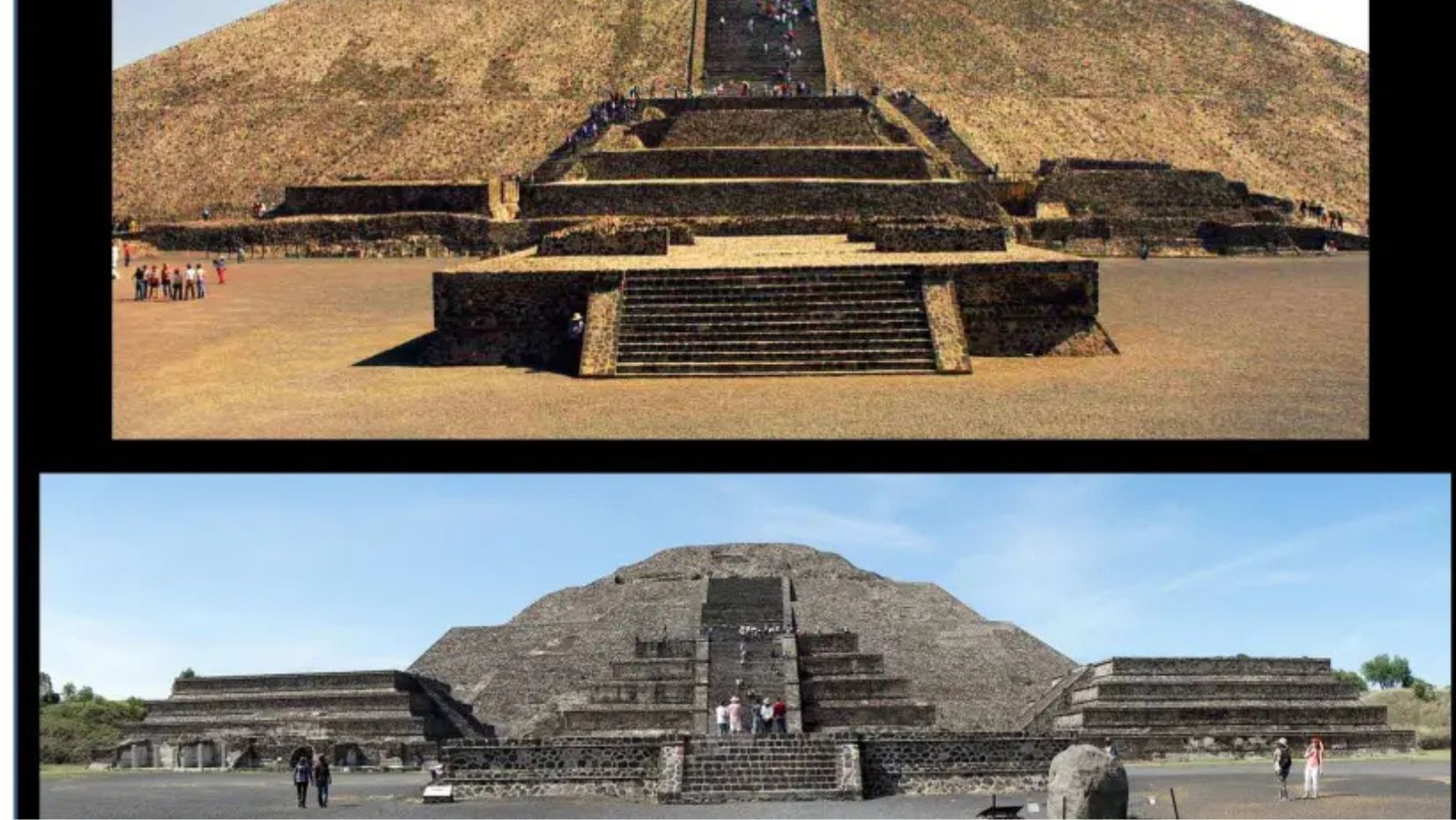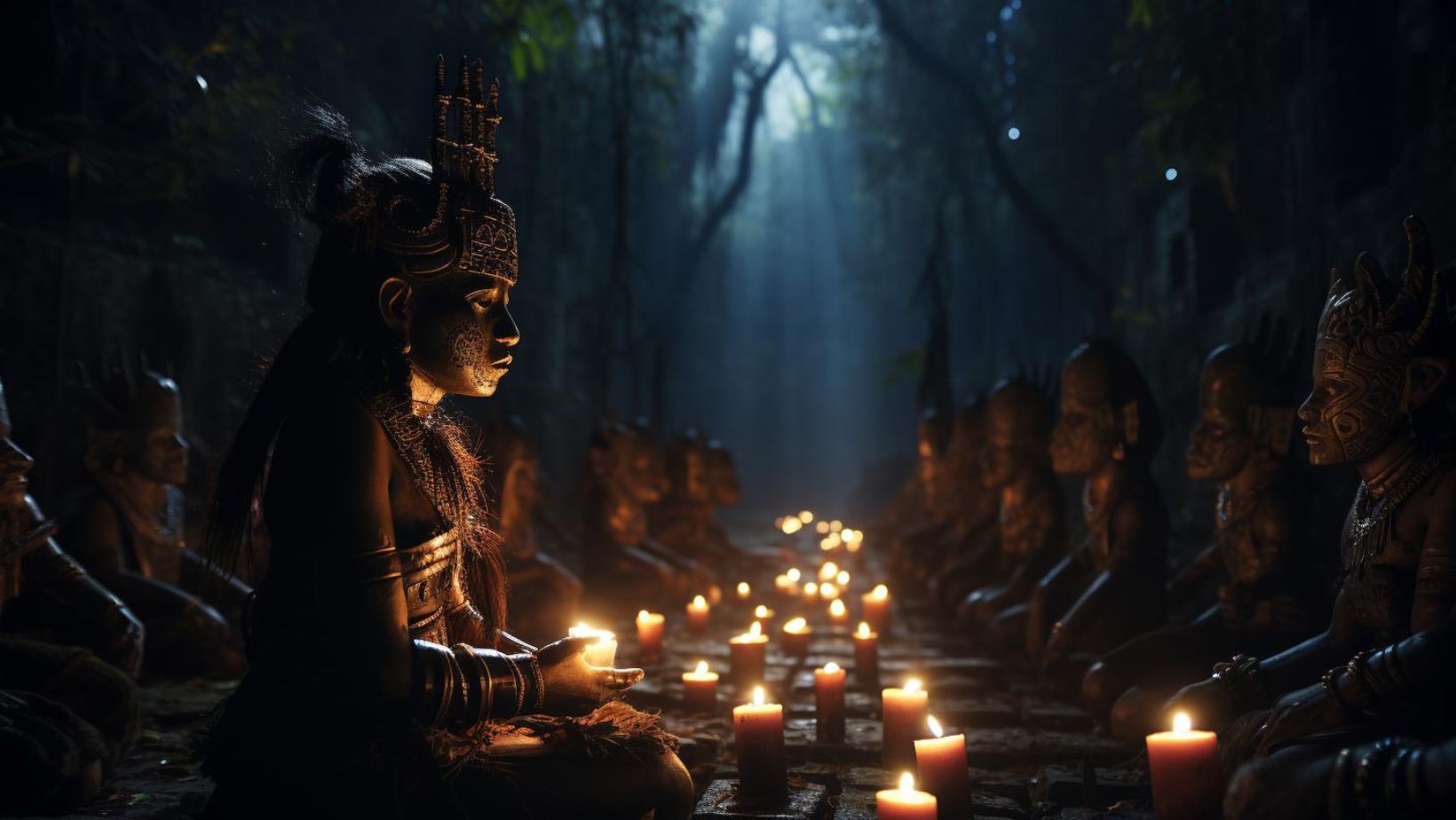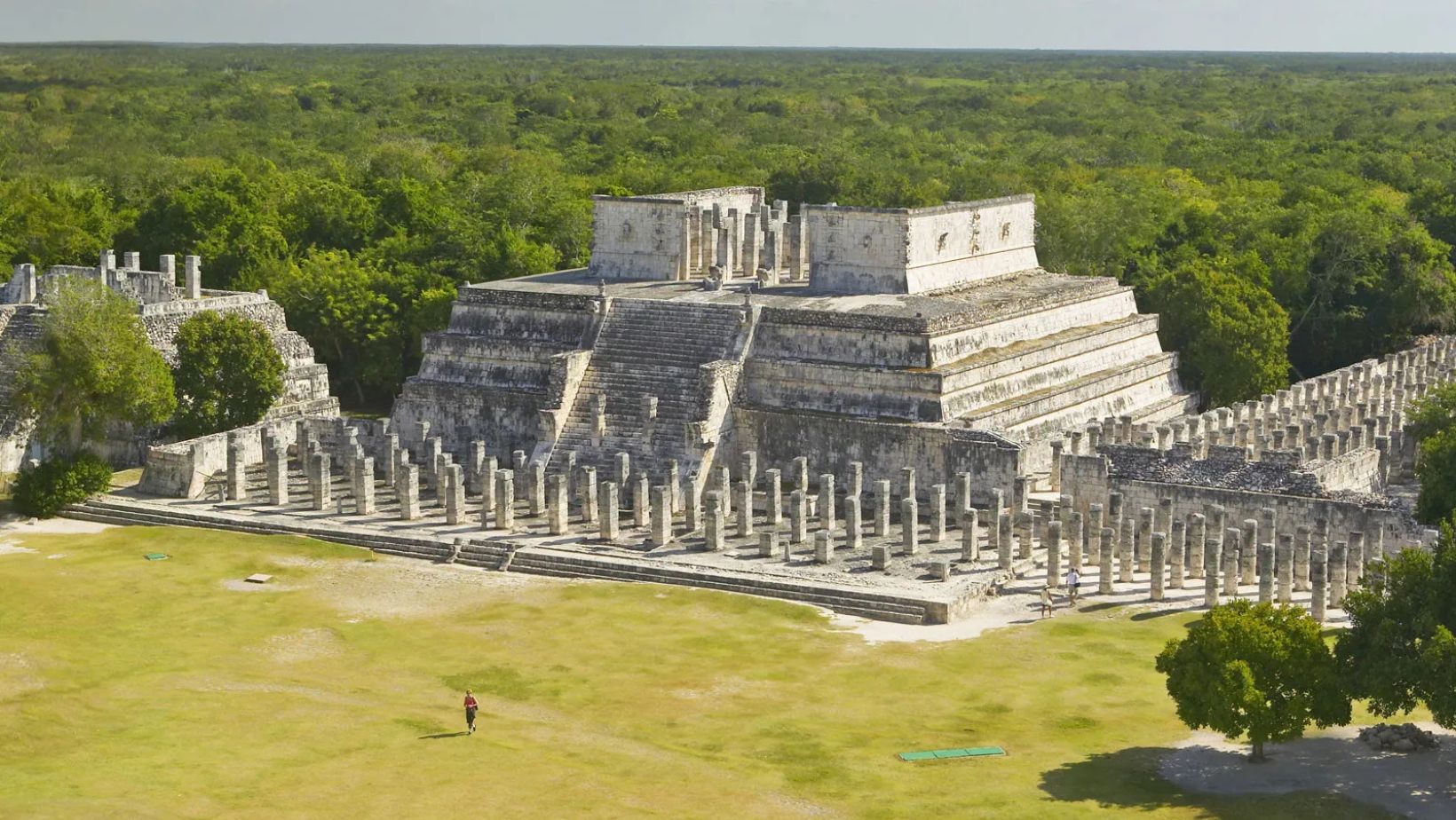Ceremonial centers were the beating heart of Maya civilization. These sacred spaces hosted religious rituals, festivals, and community gatherings. They were more than just architectural wonders; they were vital to Maya identity and spirituality. Each center, like Tikal or Chichen Itza, was intricately designed to reflect the culture’s connection to nature and the cosmos. Here, priests conducted ceremonies to honor the gods, while community members engaged in trade and social activities. Understanding these centers reveals much about the Maya worldview and their deep-rooted traditions. Join us as we explore the fascinating world of Maya ceremonial centers.
The Role of Ceremonial Centers in Maya Society

Ceremonial centers were crucial to Maya society, serving multiple functions beyond spirituality. They acted as hubs for trade and commerce, facilitating economic exchanges among various communities. Merchants gathered at these locations to sell goods such as jade, textiles, and pottery, strengthening regional ties.
These centers also functioned as social gathering places. Festivals, games, and communal activities took place here, fostering unity and collaboration among the Maya people. In times of drought or famine, leaders would gather at ceremonial centers to make decisions and strategize for survival, reflecting their role in governance.
Furthermore, ceremonial centers served as educational sites. They hosted rituals that conveyed cultural values and traditions to younger generations. The rituals and ceremonies conducted in these spaces were essential for maintaining the Maya worldview and ensuring cultural continuity.
In summary, ceremonial centers were multifunctional spaces integral to the social, economic, and political life of the Maya. Their significance extended well beyond religious practices, shaping the very fabric of Maya civilization.
Key Features of Maya Ceremonial Architecture
Maya ceremonial architecture is characterized by its impressive structures, each serving a specific purpose. Pyramids are among the most iconic elements, often built as temples or tombs for rulers. These pyramids, like the one at Tikal, feature steep steps leading to a shrine at the top, emphasizing their religious significance.
Open plazas are another essential feature of ceremonial centers. These vast spaces allowed for large gatherings, rituals, and public ceremonies. Surrounding the plazas are often monumental structures, including altars and stelae, which commemorate significant events or honor deities.
Altars play a vital role in Maya rituals, serving as sites for sacrifices and offerings. Made of stone or carved from wood, they often feature intricate carvings depicting gods or mythological scenes. This artistry reflects the importance of spirituality in Maya culture and their connection to the divine.
Overall, Maya ceremonial architecture embodies the civilization’s religious beliefs and social structure. Each architectural element contributes to a deeper understanding of their rituals and the significance of their sacred spaces.
Major Ceremonial Centers in the Maya World
The Maya civilization boasted several significant ceremonial centers, each playing a vital role in its cultural and religious life. Tikal, located in present-day Guatemala, is one of the most famous sites. It features impressive pyramids, plazas, and temples, including Temple I, dedicated to the ruler Ah Cacao. Tikal was a political and religious hub, showcasing the power of the Maya elite.
Copán, situated in Honduras, is renowned for its intricate stone carvings and hieroglyphics. The site includes the Acropolis and the Great Plaza, where rituals and ceremonies were held. Copán also highlights the artistry of the Maya, evident in its stelae and altars depicting important rulers and deities.
Chichen Itza is another key center, located in Mexico’s Yucatan Peninsula. It is famous for the pyramid of El Castillo, which aligns with astronomical events. Chichen Itza served as a major pilgrimage site, attracting worshippers from across the Maya world.
These ceremonial centers reflect the spiritual, political, and artistic achievements of the Maya civilization. They continue to be significant archaeological sites, providing insight into the rich history of the Maya people.
Rituals and Ceremonies: A Glimpse into Maya Spiritual Practices

Maya ceremonial centers were vibrant hubs for various spiritual practices. The Maya conducted rituals to honor their gods and seek blessings for agriculture, health, and prosperity. These rituals often involved offerings, which could include food, incense, and valuable items like jade. The act of sacrifice, both animal and, at times, human, played a crucial role in these ceremonies.
One of the most common ceremonies was the ball game, which held deep religious significance. It was not merely a sport but a ritual event that symbolized the struggle between good and evil. Victories in these games were celebrated, while defeats could lead to sacrifices, reflecting the Maya belief in the interconnectedness of life and death.
Another vital ritual was the New Year ceremony, marking the beginning of the agricultural cycle. This involved elaborate dances, music, and offerings to ensure a fruitful harvest. Priests led these ceremonies, acting as intermediaries between the people and the gods. Through these practices, the Maya expressed their devotion and reinforced community bonds, highlighting the importance of spirituality in their daily lives.
The Connection Between Nature and Ceremonial Centers
Maya ceremonial centers were strategically placed to align with significant natural features. These locations often included hills, rivers, or caves, which were considered sacred in Maya belief. The natural landscape influenced the design and orientation of the ceremonial structures, enhancing their spiritual significance.
For example, many centers were built near water sources, which were essential for agriculture and daily life. Water was viewed as a vital element in rituals, symbolizing life and fertility. Additionally, the alignment of structures with celestial events, such as solstices and equinoxes, demonstrated the Maya’s understanding of astronomy and its importance in their culture.
Natural features also played a role in the aesthetics of these sites. The use of local materials, like limestone and wood, integrated the structures into the environment. This harmony with nature reflected the Maya belief in the interconnectedness of all living things. Thus, the location and design of ceremonial centers were deeply rooted in the natural world, reinforcing the significance of nature in Maya spirituality.
Role of Priests and Priestesses in Ceremonial Activities
Priests and priestesses were central figures in Maya ceremonial life. They were responsible for conducting rituals that honored the gods and ensured the community’s well-being. Their roles included performing sacrifices, offering prayers, and interpreting the will of the deities. This made them vital to the spiritual health of Maya society.
These religious leaders underwent extensive training. They learned sacred texts, rituals, and the significance of various offerings. Their deep understanding of astronomy also helped them time ceremonies according to celestial events. This knowledge was crucial for agricultural practices, as it aligned rituals with planting and harvest cycles.
Priests and priestesses also acted as advisors to rulers. Their insights into omens and divine messages guided political decisions. This close relationship between religious and political power reinforced the social hierarchy within Maya communities. Ultimately, priests and priestesses were essential for maintaining the spiritual and social fabric of Maya life, connecting the people with their gods.
Ceremonial Centers as Centers of Trade and Social Interaction
Maya ceremonial centers were not only spiritual hubs but also thriving centers of trade and social interaction. These sites brought together people from various regions, facilitating the exchange of goods like jade, obsidian, and textiles. Large marketplaces often sprang up around these centers, allowing for vibrant trade networks to develop. This helped the Maya economy flourish and strengthened ties between different city-states.
In addition to trade, ceremonial centers were places for festivals and gatherings. These events allowed different social classes to interact and share cultural practices. As people gathered for religious ceremonies, they also engaged in social and political discussions. This blend of sacred and social activities fostered unity among the Maya people.
Cultural exchange was another vital aspect. Travelers brought new ideas, customs, and innovations from distant regions. This interchange contributed to the diversity and richness of Maya culture, blending local traditions with external influences. As a result, ceremonial centers became key spaces for both spiritual and societal growth, shaping Maya civilization for centuries.
The Decline of Ceremonial Centers: Factors and Consequences
The decline of Maya ceremonial centers occurred due to several interrelated factors. Environmental changes, such as drought, significantly impacted agricultural productivity. As crops failed, food shortages arose, leading to social unrest and decreased populations in these centers. Additionally, warfare between city-states weakened the stability and economic strength of ceremonial sites.
Economic shifts also played a role in this decline. Trade routes changed or collapsed, causing disruptions in the flow of goods. Many centers that relied heavily on trade became less significant as their economies faltered. As people migrated to more fertile or secure areas, the once-thriving ceremonial centers began to empty.
The consequences of this decline were profound. The loss of ceremonial centers diminished cultural and religious practices. Communities that once gathered for rituals and trade became fragmented. This shift contributed to the overall decline of Maya civilization, as the social, political, and spiritual cohesion provided by these centers eroded over time. The once-vibrant heart of Maya life faded, leaving a legacy of what was lost in their absence.
Modern-Day Significance of Maya Ceremonial Centers

Today, Maya ceremonial centers hold great significance for contemporary Maya culture. These ancient sites are seen as symbols of identity and heritage. Many Maya communities engage in cultural practices that honor their ancestors and preserve their traditions. Ceremonial centers serve as vital links to the past, fostering a sense of pride among Maya descendants.
Efforts to preserve and protect these sites have gained momentum in recent years. Archaeologists and local communities collaborate to ensure the proper restoration and conservation of these historical treasures. This work helps educate both locals and visitors about Maya culture and history. It also emphasizes the importance of sustainable tourism.
Moreover, many ceremonial centers remain active spaces for rituals and celebrations. Festivals often take place at these sites, blending ancient customs with modern practices. This ongoing connection to the past reinforces cultural continuity and resilience. Ultimately, the preservation of ceremonial centers plays a crucial role in keeping Maya traditions alive for future generations.
Conclusion: Ceremonial Centers
Maya ceremonial centers are vital to understanding the spirituality and culture of the Maya civilization. These sites were not only hubs of religious activities but also centers for trade and social interaction. They reveal the intricate relationship between the Maya people and their environment. Today, these ancient centers continue to inspire modern Maya communities, preserving their rich heritage and traditions. By studying these locations, we gain insights into the beliefs, practices, and societal structures that shaped one of the most remarkable civilizations in history. The legacy of these ceremonial centers endures, connecting past and present.
FAQs
What are ceremonial centers in Maya culture?
Ceremonial centers are important sites in Maya culture where religious rituals, ceremonies, and social gatherings took place. These centers typically featured large plazas, temples, and altars, serving as focal points for community life and spiritual practices.
How did the Maya choose locations for their ceremonial centers?
The Maya selected locations for their ceremonial centers based on natural features like rivers, mountains, and fertile land. These sites were often seen as sacred and held spiritual significance, enhancing their role as centers of worship and community interaction.
What kinds of rituals were performed at these centers?
Rituals at ceremonial centers included offerings, sacrifices, and festivals. These ceremonies were conducted to honor deities, ensure agricultural fertility, and seek blessings for the community. Each ritual was deeply connected to Maya cosmology and seasonal cycles.
How did ceremonial centers impact trade among Maya city-states?
Ceremonial centers facilitated trade by attracting merchants and visitors from various regions. The influx of people for religious events created opportunities for cultural exchange and commerce. This helped establish networks that connected different Maya city-states.
What is the current status of Maya ceremonial centers?
Many ceremonial centers are now archaeological sites that attract tourists and researchers. Efforts are ongoing to preserve and restore these sites, allowing contemporary Maya communities to connect with their heritage. These sites serve as educational resources, shedding light on the rich history and culture of the Maya civilization.

